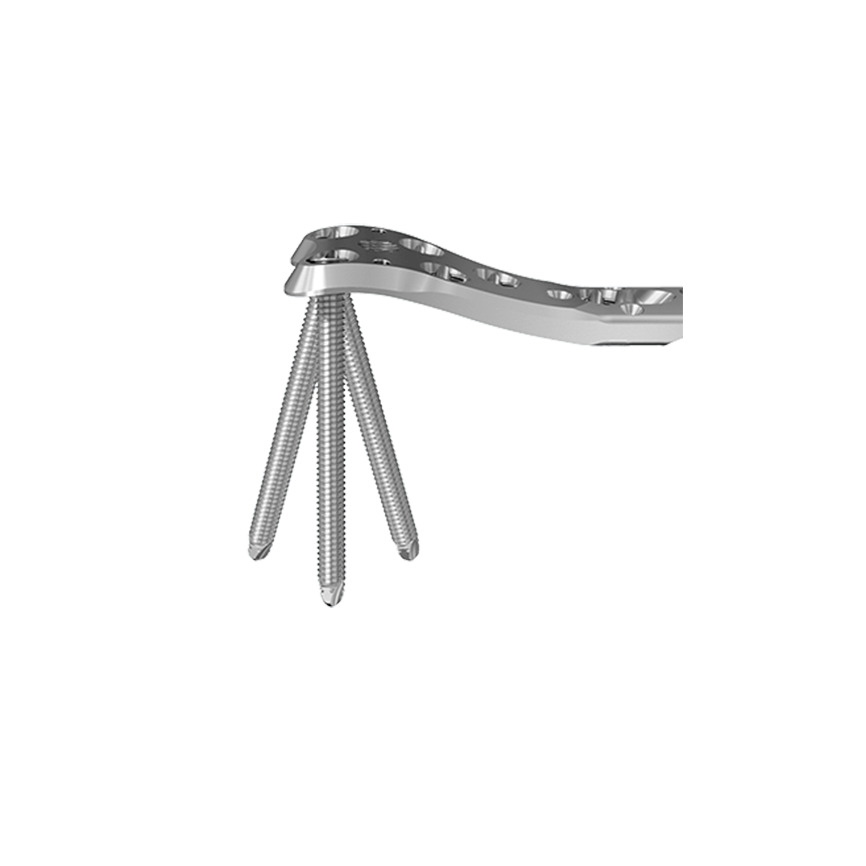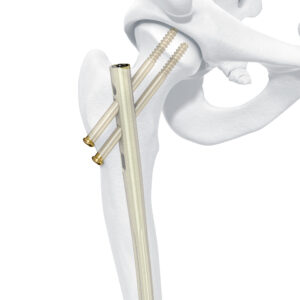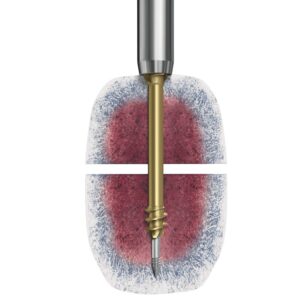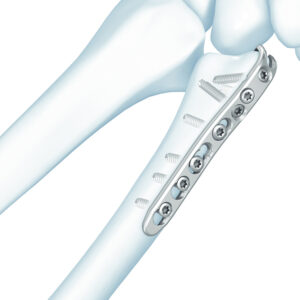The DePuy Synthes 4.5 mm VA LCP® Curved Condylar Plate is part of the VA LCP Periarticular Plating System which merges variable angle locking screw technology with conventional plating techniques.
The 4.5 mm VA LCP Curved Condylar Plate System has many similarities to standard locking fixation methods, with a few important improvements. Variable angle locking screws provide the ability to create a fixed-angle construct while also allowing the surgeon the freedom to choose the screw trajectory before “fixing” the angle of the screw.
A fixed-angle construct provides advantages in osteopenic bone or multifragmentary bridge-plated fractures where screws do not rely on plate-to-bone compression to resist patient load, but function similarly to multiple, small, angled blade plates.
The variable angle locking compression plate (VA LCP) has variable angle Combi holes in the plate shaft that combine a dynamic compression unit (DCU) hole with a variable angle locking screw hole. The variable angle Combi hole provides the flexibility of axial compression and variable angle locking capability throughout the length of the plate shaft.






